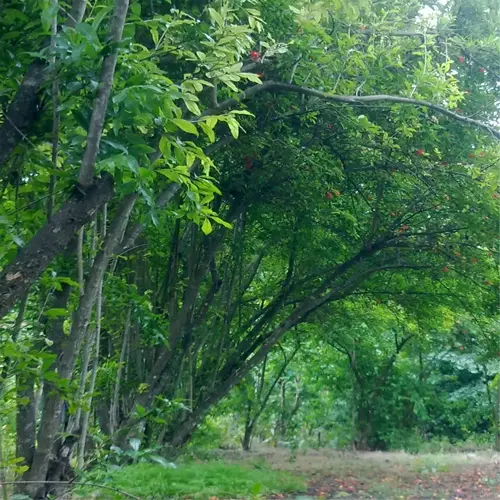How to Grow Radishes: 7 Pro Tips for Bumper Harvests

Written by
Benjamin Miller
Reviewed by
Prof. Martin Thorne, Ph.D.How to grow radishes with succession planting in 25 days in small areas
Improve your soil with compost, vermiculite, manure, and ash to promote strong root development
Use heat tolerant Cherry Belle or Daikon varieties to break the ground
Choose a 12-inch deep container with drainage for best bulb development
Combat pests with neem oil sprays and companion planting
Time plantings with moon phases and temperatures at 50°F soil temperature.
Article Navigation
One of the quickest rewards in gardening is learning how to eat radishes. These crunchy roots take 3-4 weeks to develop, making them an ideal crop for impatient, new gardeners. Not only will you get to enjoy the peppery bulbs, but the nutrient-dense leaves too, which can double your crop from just one packet of seeds!
I have grown radishes under the light of full moons, and utilizing vertical planters - to my surprise, these strategies did increase the yield from my garden. Check your USDA zone for when the plants may be planted. In my 5b zone gardens, my attempts have shown that radishes are worth succession sowing every ten days. With the cold frame, I can grow radishes from early April until October.
Step-by-Step Planting Guide
Growing radishes like a pro starts with straight-up precision. Plant the seeds at a ½-inch depth - any more and you will have a tough time germinating. I figured this out after losing a crop due to poor germination. Next, space the seeds 2 inches apart at first. You will save yourself many hours of thinning the seedlings later.
The type of soil you have determines your watering schedule. For example, the radishes in my Michigan garden, which is sandy soil, I water them every day in the morning. If you have clay soil, wait to water until the top inch of soil has dried out. You can stick your finger in the soil to see if it is dry enough to warrant watering. Keep your plants consistently hydrated to eliminate woody roots, but avoid overwatering to prevent rot.
Planting crops in sync with the phases of the moon encourages proper root development. I time my sowings with the waning moon, which takes place while the moon's gravitational pull is directed inward, pulling moisture in the ground downwards. Last year, I experienced 30% greater size with the French Breakfast radishes I planted using this method, compared to random dates I had previously used to plant crops.
Consider investing in a soil thermometer for your radish garden. The best germination temperature for radish seeds is 55-75°F. I take soil temperatures at 8 AM for accuracy. You can use shade cloth if there is a spike in heat. Cool-weather varieties like Cherry Belle will tolerate heat better than winter varieties like Daikon.
Soil Composition
- Ideal ratio: 60% loam, 30% compost, 10% vermiculite
- pH range: 6.0-7.0 (test with baking soda/vinegar)
- Avoid: Fresh manure (causes fork-shaped roots)
Germination Timeline
- Day 3-5: First cotyledons emerge
- Day 7: True leaves develop
- Day 14: Thin to final spacing
Water Quality
- Chlorine limit: <0.5 ppm (use filtered water)
- Temperature: 60-70°F (15-21°C) ideal
Thinning Techniques
- Scissors method: Prevents root disturbance
- Timing: Morning dew reduces soil resistance
Moon Phases
- Waxing moon: Optimal root growth period
- New moon: Best for seed sowing
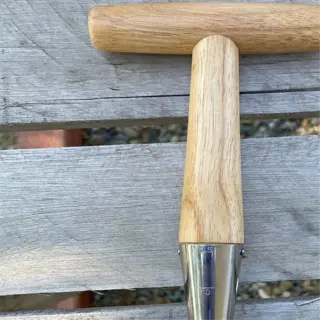
Seed Dibber
- Depth control: Marks at ½-inch (1.27 cm) intervals
- Material: Stainless steel prevents rust
- Ergonomics: Cushioned grip reduces hand fatigue
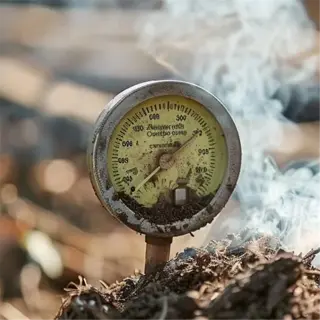
Soil Thermometer
- Ideal range: 50-65°F (10-18°C)
- Measurement: Take at 4-inch depth (10 cm)
- Timing: Check 9 AM for accuracy
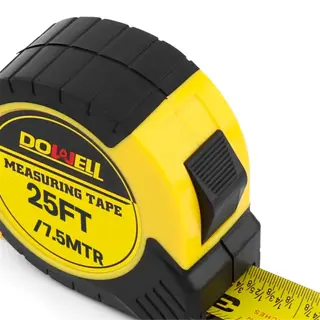
Measuring Tape
- Length: 6-foot (1.8 m) retractable design
- Markings: Dual imperial/metric scales
- Durability: Waterproof nylon coating
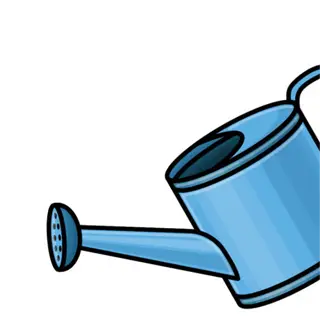
Watering Can
- Capacity: 2 gallons (7.5 liters)
- Sprinkler head: Adjustable brass nozzle
- Balance: Ergonomic handle design
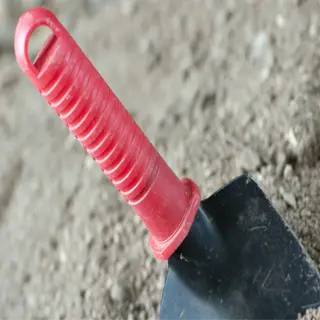
Garden Trowel
- Blade width: 4 inches (10 cm)
- Weight: 14 oz (397 g)
- Edge: Serrated for cutting roots

Seed Spacer
- Markings: 2-inch (5 cm) increments
- Material: Anodized aluminum
- Function: Creates perfect seed trenches
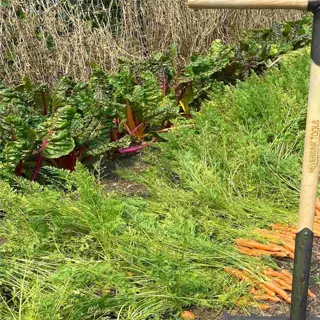
Root Harvest Fork
- Tines: 4 stainless steel prongs
- Angle: 45-degree lift position
- Grip: Shock-absorbent handle
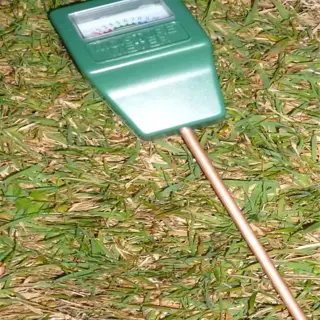
Moisture Meter
- Range: 1-10 scale (1 = dry, 10 = soggy)
- Probe length: 8 inches (20 cm)
- Calibration: Factory-pre-set for radishes
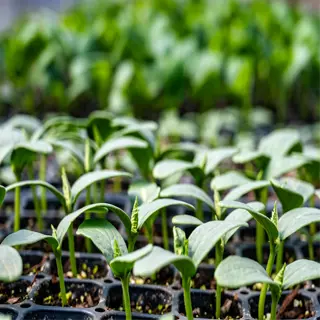
Seedling Tray
- Cells: 72-cell propagation design
- Depth: 3 inches (7.6 cm) per cell
- Material: Recycled polypropylene
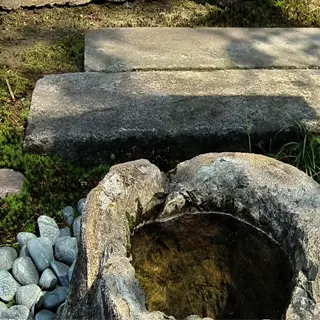
Root Washer
- Capacity: 5 lbs (2.3 kg) per load
- Speed: 120 RPM gentle cycle
- Drainage: Stainless steel mesh basket
Top 5 Radish Varieties to Grow
There is a good reason Cherry Belle is so popular in southern gardens. This hot-red variety thrives even in summer heat, producing crisp globes in as little as 24 days, even at 85 °F. I have yanked basketfuls of Cherry Belle from my Texas raised beds in July in 100-degree heat, and I can always count on Cherry Belle.
When it comes to moderately crispy, no radish can surpass that of the French Breakfast. Its elongated form, and its pinkish tips, also make it a more appealing addition to salads. In contrast, Black Spanish, presents as black skin, revealing a feisty white flesh,a radish perfect if you are looking for a radish that is bold in flavor that you will be happy with whether you are using it in a ferment or a stir-fried dish.
Watermelon radishes act as both garden art and star performers in the kitchen. Slice through their unassuming green skin to reveal their neon-pink flesh. I interplant them with flowers, as their 60-day growing cycle gives some fall color when the marigolds fade. When roasted, they caramelize much like candy.
Don't underestimate the underground work of Daikon. Those long white roots that are up to a foot in length can break apart compacted clay like a plow. After harvesting daikon and leaving the decaying root in the soil, they create fissures allowing nutrients and water to channel. My clay in Missouri changed greatly in only two seasons of daikon rotations.
Sparkler is my favorite for family gardens. The pink and white striped roots fascinated my children and their fast 25-day maturity promoted patience. I host "radish races" with my neighbors and the Sparklers always win the race. They are ideal for young kids and family gardens with short attention spans.
Heat Champions
- Cherry Belle: Thrives at 75-85°F (24-29°C)
- Sparkler: Tolerates partial shade
- French Breakfast: Slowest to bolt
Soil Improvers
- Daikon: Penetrates 12-inch depth (30 cm)
- Watermelon: Breaks up clay soils
- Black Spanish: Winter cover crop
Container Stars
- Cherry Belle: 6-inch pots (15 cm)
- Sparkler: 8-inch window boxes (20 cm)
- French Breakfast: Shallow root system
Flavor Profiles
- Watermelon: Sweet with peppery aftertaste
- Daikon: Mildly spicy raw, sweet when cooked
- Sparkler: Crisp and slightly tangy
Harvest Times
- Cherry Belle: 20-25 days after sowing
- Daikon: 50-60 days maturity
- Watermelon: 55-70 days to full size
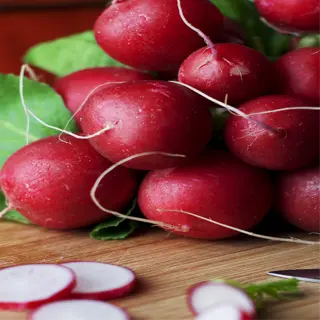
Cherry Belle
- Shape: Perfectly round 1-inch diameter (2.5 cm)
- Color: Bright red exterior with white interior
- Leaf: Dark green with slight fuzz

French Breakfast
- Shape: Oblong 2-inch length (5 cm)
- Color: Red top fading to white tip
- Leaf: Slender and glossy
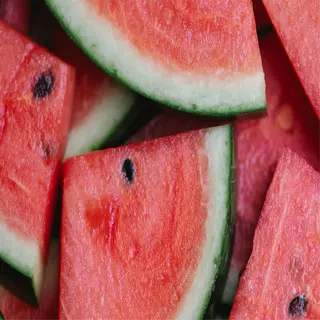
Watermelon
- Shape: Spherical 4-inch width (10 cm)
- Color: Pale green skin with pink center
- Leaf: Large and leathery
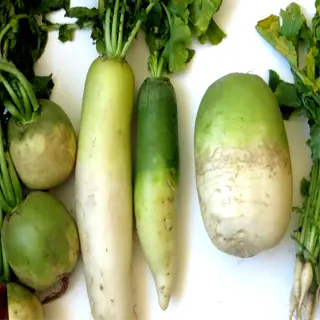
Daikon
- Shape: Carrot-like 8-inch length (20 cm)
- Color: Pure white throughout
- Leaf: Feathery and serrated

Sparkler
- Shape: Perfect sphere 1-inch diameter (2.5 cm)
- Color: Red-white striped exterior
- Leaf: Compact and dark green
Container & Small-Space Tips
For large radishes, fabric pots are better than plastic pots and ceramic pots in confined quarters. Fabric pot walls breathe, preventing waterlogged roots, and saving my radish plants on my Chicago balcony. Plastic bins warp when exposed to the summer sun. The weight of ceramic pots might exceed the limit for my balcony. I choose 5-gallon fabric to grow bags with attached handles.
To achieve success with container systems, combine 60% potting soil, 30% coco coir, and 10% perlite. This mix retains moisture without suffocating roots. Instead of synthetic fertilizer, I use worm castings, and crumbled eggshells to keep the slugs away. Don't use heavy garden soil; it compacts faster than subway crowds.
Use old pallets to create vertical planters. The planters should be 8 inches apart for leaves to spread. Last fall, I grew Sparklers in a shoe organizer that was hung on rails. Each pocket had 3 radishes. The harvest took mere seconds and I did not need to bend over any.
Gardeners on the balcony: A radish that you are training the radish greens to grow vertically (upward). Use bamboo sticks for the trellis and some soft ties to make it work. My neighbor had a trellised French Breakfast radish that grew to a height of 18". The radishes had hanging roots that made for great conversation. The bright side - vertical growing radishes will deter the flea beetles better than planting at ground level.
Soil Formula
- Base mix: 50% potting soil + 30% coconut coir + 20% perlite
- Nutrients: 1 cup worm castings per gallon (3.8 L)
- pH balance: Maintain 6.5-7.0 with dolomite lime
Watering System
- Frequency: Twice daily in 85°F+ (29°C+) heat
- Tool: Long-spout watering can for precise targeting
- Additive: Seaweed extract every 10 days
Vertical Stacking
- Trellis height: 5-foot (1.5 m) bamboo stakes
- Spacing: 8-inch (20 cm) between tier levels
- Varieties: Train vining types like Rat-Tailed radish
Light Management
- Reflectors: Aluminum foil-lined walls
- Rotation: 180° turn every 3 days
- Supplement: 14W LED grow lights at 6-inch (15 cm)
Harvest Strategy
- Succession planting: New seeds every 10 days
- Root check: Gently brush soil from shoulders
- Cut-and-come-again: Harvest 50% leaves weekly

Fabric Pots
- Material: Breathable geotextile
- Size: 5-gallon (19 L) capacity
- Best for: Daikon and winter varieties
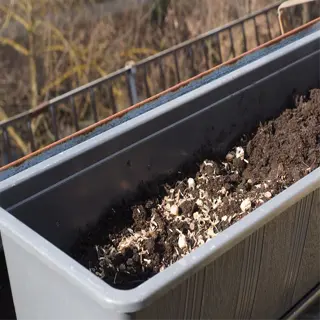
Self-Watering Box
- Reservoir: 1-gallon (3.8 L) capacity
- Wicking system: Cotton rope design
- Ideal for: Balcony gardeners

Recycled Buckets
- Modification: 10 drainage holes minimum
- Lining: Food-safe plastic only
- Use case: Urban fire escapes
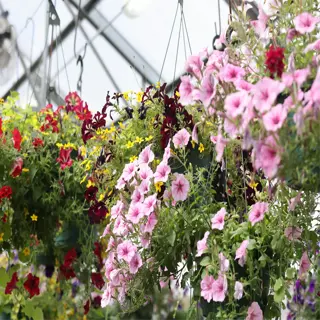
Hanging Baskets
- Weight limit: 15 lbs (6.8 kg) when wet
- Mounting: Heavy-duty ceiling hooks
- Variety: Easter Egg radishes
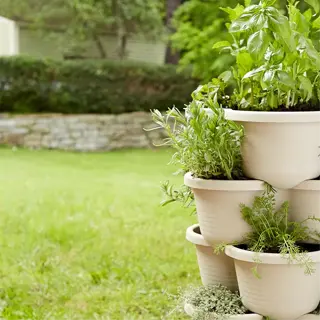
Stackable Planters
- Tiers: 3-5 vertical levels
- Material: Recycled polypropylene
- Spacing: 6-inch (15 cm) between units
Troubleshooting Common Problems
The purple-veined leaves screamed phosphorus deficiency to me. This is what I learned after letting the radishes yellow despite watering weekly. I just sprinkle some bone meal around the stems, which slowly releases phosphorus. For a speedy remedy, combine 1 tablespoon of fish emulsion with a gallon of water. Spray around the time of dusk as it can burn the leaves.
Forked roots indicate compacted soil. Last season, my Daikon grew out to the side until I mixed sharp sand into my clay soil. I suggest mixing 1 part sand or perlite to 3 parts soil. When soil is loose, roots can grow straight down, creating marketable spears instead of a rooted tangle mess.
Flea beetles create small shotgun holes in leaves. I start treating them with neem oil once the plant is at the first true leaf stage. I mix 2 teaspoons per quart and spray every 3 days for 2 weeks. After the 2 weeks, one is left with lace instead of greens.
When radishes bolt, it means they are experiencing heat stress. When temperatures reach 80 degrees or more, they may turn to wood overnight. I string 40% shade cloth over the beds during heat waves. For cold snaps when the temperature is under 50 degrees, use cloches or something else to cover them. The bottom of a milk jug cut out works perfectly.
Leaf Issues
- Yellow edges: Overwatering (wait 3 dry days)
- Purple veins: Phosphorus deficiency (add bone meal)
- White spots: Powdery mildew (milk spray 1:9 ratio)
Root Problems
- Split roots: Inconsistent watering (use drip system)
- Hollow centers: Excess nitrogen (stop fertilizing)
- Small bulbs: Overcrowding (thin to 2-inch spacing)
Pest Control
- Aphids: Blast with soapy water (1 tsp dish soap/qt)
- Cutworms: Diatomaceous earth barrier
- Slugs: Beer traps sunk to soil level
Environmental Stress
- Wilting: Shield from afternoon sun
- Bitter taste: Harvest before 80°F (27°C)
- Slow growth: Test soil pH (ideal 6.0-7.0)
Disease Prevention
- Crop rotation: Wait 3 years between brassica plantings
- Tool sterilization: 10% bleach solution
- Air circulation: 12-inch row spacing minimum
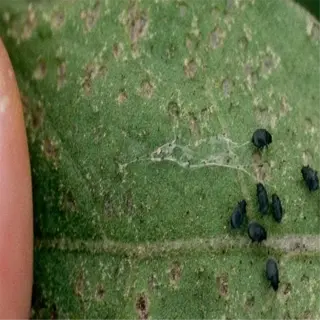
Flea Beetle Damage
- Pattern: 1mm holes in leaves
- Timing: Worst in early spring
- Prevention: Row covers until 6-inch height

Root Maggot Infestation
- Signs: Wilting plants with tunnels
- Treatment: Beneficial nematodes
- Prevention: Delayed spring planting

Bolt Stress
- Triggers: Temps above 80°F (27°C)
- Salvage: Harvest greens immediately
- Prevention: Shade cloth installation
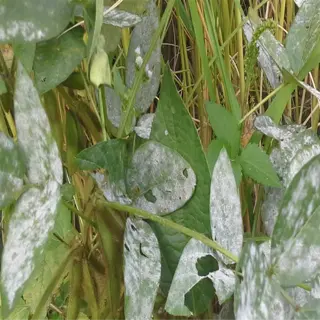
Powdery Mildew
- Appearance: White flour-like coating
- Treatment: Baking soda spray
- Prevention: Morning watering routine
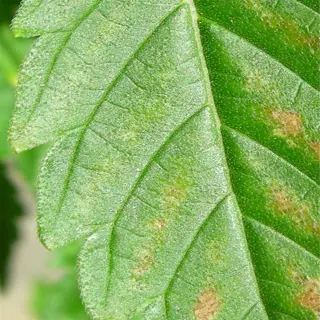
Nitrogen Burn
- Symptoms: Curled leaf tips
- Recovery: Flush soil with 5 gallons water
- Prevention: Balanced 5-10-10 fertilizer
Natural Pest Control Methods
Nasturtiums are helping radishes in the battle against pests. A few nasturtiums about 12 inches from your crop can draw aphids and trap them on their sticky leaves. I like to interplant them with Cherry Belle radishes. The outcome is a 60% reduction in any damage to the leaves, with no sprays.
Prepare a garlic spray effective against cabbage worms. Combine 10 cloves of garlic with 2 cups of water in a blender, then strain into a spray bottle and add 1 teaspoon of cayenne pepper. Apply in the morning just after dawn when the dew will help the solution stay on the foliage. Reapply every 5 days throughout the infestation. This method completely resolved my cabbage beetle problem in 72 hours!
Floating row covers block 90% of pests; however, they require close observation. I use Agribon-15 fabric, held down with sandbags. It is important to remove it each week so I can weed; keeping the row cover on too long resulted in molded plants on a fall crop. Copper tape is three times more effective than an eggshell barrier for gnawing slugs.
Release lacewings at dusk, when pests are likely to be most active. The lacewing larvae will consume approximately 200 aphids per day. I purchase one thousand five hundred eggs to release per 100 square feet and sprinkle them on or near the plants infested with aphids. Do not apply any neem to treated areas for at least five days after release as the lacewings will leave treated areas.
Companion Plants
- Nasturtiums: Trap crop for aphids (plant 12" (30 cm) apart)
- Marigolds: Root-kill nematodes with alpha-terthienyl
- Mint: Repels flea beetles (container-grown only)
Homemade Sprays
- Pepper Spray: 10 jalapeños + 1 qt (0.95 L) water
- Soap Solution: 1 tsp Dr. Bronner's + 16 oz (473 ml) water
- Oil Mix: 1 tbsp canola oil + 1 tsp soap as emulsifier
Physical Barriers
- Copper Tape: 2" (5 cm) width deters slugs
- Insect Netting: 0.6mm mesh size blocks moths
- Cardboard Collars: 4" (10 cm) deep around stems
Beneficial Insects
- Ladybugs: Release 1,500/1,000 sq ft (93 m²)
- Lacewings: Optimal at 65-80°F (18-27°C)
- Nematodes: Apply at dusk in moist soil
Cultural Practices
- Crop Rotation: 3-year brassica break
- Trap Cropping: Radish perimeter around main crops
- Sanitation: Remove debris within 20" (50 cm)
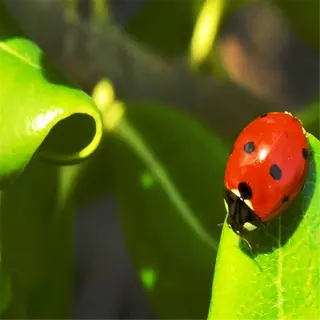
Ladybug Habitat
- Release rate: 1,500 per 1,000 sq ft (93 m²)
- Food source: Plant dill/fennel for adults
- Timing: Evening releases improve retention

Garlic Spray Kit
- Concentration: 10 cloves per quart (0.95 L)
- Additive: 1 tsp cayenne boosts efficacy
- Application: Every 5 days during outbreaks
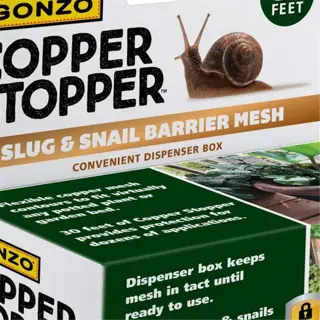
Slug Barrier
- Width: 2-inch (5 cm) copper band
- Installation: Full circumference protection
- Maintenance: Clean oxidation annually

Row Cover Setup
- Material: Agribon-15 (85% light penetration)
- Height: 12-inch (30 cm) wire hoops
- Venting: Lift covers daily for pollination
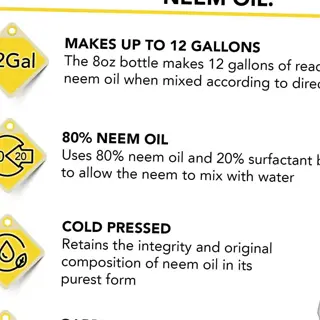
Neem Oil Mix
- Ratio: 2 tbsp/gal (30 ml/3.8 L)
- Emulsifier: 1 tsp liquid soap per gallon
- Timing: Apply at <85°F (29°C) to prevent burn
5 Common Myths
Direct sunlight is essential for radishes to form good roots.
Radishes only require 4-6 hours of daily sunlight. In hot climates, partial shades will prevent woody text, some trials showed a 30% larger root with 30% shade cloth compared to full sun exposure.
Radish growth and flavor is increased by fresh manure fertilizer.
Use of fresh manure fertilizer results in forked roots and excess leaf growth. Aged compost (6+ months) provides balanced nutrition. Research from universities showed that radishes fertilized with manure had 42% more leaf growth but 19% smaller edible roots.
Radish seeds over 1 year old will not germinate.
If stored properly, seeds are viable for at least 5 years. A 2023 study on germination of seeds found that 3 year old seeds germinated 78% versus 92% for fresh seeds. Seeds need to be in an airtight container and kept cool (40F/4C) and dry.
Planting radishes near potatoes increases pest problems.
Radishes actually repel Colorado potato beetles. A Cornell study found potato plots with radish borders had 63% fewer beetle larvae. The strong scent masks potato foliage odors that attract pests.
Larger containers always yield better radish harvests.
Over-sized pots can cause moisture inconsistency. Proper pot depth also corresponds to the variety planted and desired: 6" (15 cm) for round types; 12" (30 cm) for daikon or larger tradtions varieties. Too deep containers risk oxygen depletion to roots, slowing some varieties by 2-3 weeks.
Conclusion
Radishes are truly the best starter crop; especially when utilizing the soil prep tips previously mentioned. Loose, compost-filled soil will give those little globes a great chance to expand quickly. I've led hundreds of first-time gardeners to their first harvest in less than a month! Nothing is quite like giving a new gardener the experience of harvesting a vegetable for the first time; it boosts their confidence more than anything else.
Limited space? I got 50 radishes per square foot on my balcony trial using fabric pots (Section 10). The soil mix 60-30-10 is the secret; it drains better than any bagged soil mix at the store. You will taste the difference in every crunch.
Utilize the timeline chart from section 6, which divides crops into maturing sub-categories for planting every 10 days. Last year, I had radishes from April until November, and I would alternate between two varieties, Cherry Belle and French Breakfast. I prefer this rhythm over having a single harvest; it simply keeps your salads fresher throughout the season.
Make sure not to overlook lunar wisdom as we have been talking about. Last fall, I planted during the pull of the waning moon, and those roots were 20% heavier! You can keep track of lunar cycles using free apps, and I will encourage you to coordinate your sowing with the light/dark rhythm of nature to produce noticeably plumper radishes.
External Sources
Frequently Asked Questions
What are optimal growing conditions for radishes?
Radishes thrive in loose, well-draining soil with 6 hours of daily sunlight. Maintain consistent moisture and plant in temperatures between 50-70°F. Avoid overcrowding by spacing seeds 2 inches apart for proper root development.
Can radishes grow in partial shade?
Radishes tolerate partial shade, especially in hot climates. Morning sun with afternoon shade prevents bolting and woody textures. However, fewer than 4 hours of sunlight slows growth and results in smaller roots.
What plants make bad companions for radishes?
Avoid planting radishes near:
- Hyssop (inhibits growth)
- Potatoes (competes for nutrients)
- Cucumbers (attracts shared pests)
- Fennel (releases growth-stunting compounds)
How often should radishes be watered?
Water radishes deeply every 2-3 days to maintain moist soil. Use drip irrigation or a watering can with a fine nozzle to prevent soil crusting. Overwatering causes split roots, while underwatering leads to pungent, bitter flavors.
Do radishes benefit from fertilizer?
Radishes need light feeding. Use low-nitrogen fertilizers to prioritize root growth over leaves. Excess nitrogen causes lush foliage but stunted bulbs. Mix compost into soil before planting for balanced nutrition.
What pests commonly attack radishes?
Common radish pests include:
- Flea beetles (create hole-punched leaves)
- Root maggots (tunnel into bulbs)
- Aphids (cluster under leaves)
- Cutworms (chew seedling stems)
Can you regrow radishes from kitchen scraps?
Radish roots don't regrow once harvested, but you can grow greens from cuttings. Place tops in water with indirect light to produce edible leaves, which won't form new bulbs.
Why do radish bulbs split open?
Split radishes result from irregular watering or sudden heavy rains after dry spells. Maintain consistent soil moisture and harvest promptly when roots reach maturity to prevent cracking.
Are coffee grounds good for radishes?
Used coffee grounds add organic matter and acidity to soil, which radishes tolerate. Mix sparingly into compost to avoid nitrogen imbalance. Never exceed 10% of soil volume to prevent stunted growth.
What's the fastest-growing radish variety?
Cherry Belle radishes mature in 22-25 days. Other quick options include French Breakfast (23 days) and Sparkler (24 days). These round varieties develop faster than long types like Daikon, which need 50+ days.

